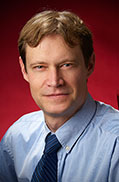ARCHIVED: NOT AVAILABLE FOR CREDIT
FNA Cytology of the Head and Neck: Common Cases and Their Pitfalls
This lecture will be an overview of FNA cytology of the head and neck using a case-based approach to discuss some of the more common diagnostic dilemmas. The topics that will be emphasized include lymph nodes, cystic neck masses, reactive reparative changes, and salivary gland lesions.
Originally presented on March 28, 2013, in Salt Lake City, Utah.
Lecture Presenter
 | Benjamin L. Witt, MD Medical Director, Cytopathology |
Dr. Witt is a medical director of the Cytopathology Laboratory at ARUP, an assistant professor of cytology and surgical pathology at the University of Utah School of Medicine, where he serves as the residency rotation director for cytopathology, and a member of the University of Utah Medical Education Committee. Dr. Witt received his MD at the University of Colorado Denver, School of Medicine and completed his AP/CP pathology residency at the University of Chicago (NorthShore) where he served as the chief resident during his last two years. He also completed a cytopathology fellowship at the University of Utah/ARUP Laboratories, and is board certified in anatomic and clinical pathology, with subspecialty boards in cytopathology. Dr. Witt is a member of the College of American Pathologists, the American Society for Clinical Pathology, and the American Society of Cytopathologists. His research interests include quality assurance as well as studies related to fine-needle aspiration and exfoliative cytology.
Objectives
After this presentation, participants will be able to:
- Review some of the more common cytodiagnoses of the Head and Neck.
- Establish an approach to some of the diagnostic dilemmas using a case based tactic.
- Emphasized topics include lymph nodes, cystic neck masses, reactive reparative changes, and salivary gland lesions.
Sponsored by:
University of Utah School of Medicine, and ARUP Laboratories
 Site Search
Site Search

